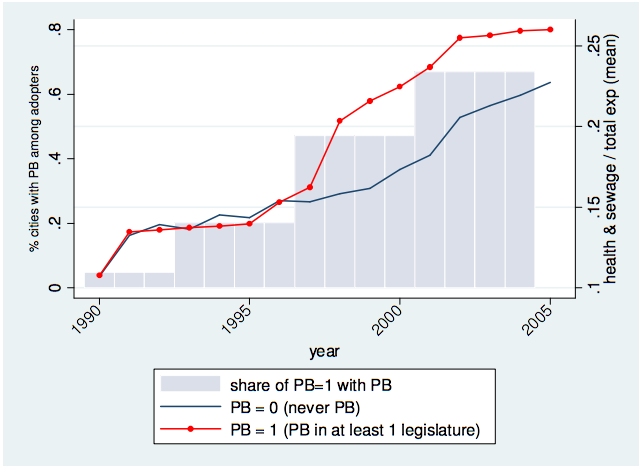Here’s an everyday moral issue. As she heads to your cousin’s wedding, your great aunt Sallie asks whether you like her hat. You find it strikingly ugly, yet you choose to say that you love it.
Here is an argument that you made the wrong decision: “All lies are morally wrong. Your statement was a lie. Therefore, your statement was morally wrong.” This line of thinking should be taken seriously. It is tight logically. Morally, it is weighty as well. Your statement was a lie by standard definitions, and lying is problematic.
If you need a reason that lying is wrong, several are available: We don’t want to be lied to, so we shouldn’t lie to others. Lying makes a convenient exception to the rule that we would want to apply in general: Tell the truth. Lying manipulates. If we view Aunt Sallie as a fully rational person, then we should assume that she can handle a truthful reply to her question. Lying is a vice, likely to form a habit and corrode virtues.
But I picked this example because the statement “I love your hat” can fit within other persuasive arguments as well. For instance, “Act so as to maximize the happiness of other people. Your statement made Aunt Sallie happy. Therefore, your statement was morally right.” Or “Express authentic and benign emotions. Your statement expressed your love for Auntie Sallie. Therefore, your statement was morally right.” Or “Be a good nephew and be nice to your aunt. Your statement was nice, coming from a nephew. Therefore, you did the right thing.”
To make matters even more complicated, your words were not just a statement about her hat (although they were that). They were also a step in a conventional conversation, a contribution to an ongoing relationship with your great aunt, and part of the flow of a day that was important to your cousin. In turn, your family relationships and events such as weddings are components of communities that give meaning to life.
I propose that we think about a case like this as a node in a network. It has many links: to abstractions such as lying and love, and to concrete realities such as your aunt’s feelings and your cousin’s wedding. In turn, each of those nodes is linked to many others, producing a complex network.
In reviewing the moral network that we perceive around us, I think we should avoid two common errors.
One mistake is to conclude that there is no right answer to the question, “What should I do?” Since most nodes have many links, we have the ability to choose which paths to follow. That does not mean that any choice is as good as any other. We should take the moral arguments seriously, even if they happen to conflict. They are not mere matters of opinion or preference. They have moral weight regardless of our preferences. For instance, I would much rather not tell an aged relative that I dislike her hat, but maybe I ought to. Our job is to decide what we should do.
The other mistake is to think that we can find determinative arguments that simply settle cases. In network terms, we would draw a line between each concrete judgment or choice and one governing principle. If a concrete situation must be linked to more than one principle (such as both lying and kindness, in this case), we would develop an algorithm for deciding which path to follow to reach a moral decision. The whole network would then become a decision tree or flowchart, with one outcome for each situation. For example, any statement that was a lie might simply be wrong; that would be the only link that counted.
I am highly skeptical of the instincts to delete moral links or to seek rules for steering our way through a moral network. Often, conflicting moral ideas represent genuine insights. Deleting or ranking them makes the world seem more comfortable and neater than it is.
Several methods are commonly proposed for simplifying a moral network to yield decisions:
- What Amartya Sen calls “informational constraints”: blocking information that ought to be irrelevant to a moral decision. For instance, according to Kantian moral theory, you should ignore any information about your aunt’s likely emotional reaction to your remark about her hat, because it is irrelevant. All that matters is whether your statement conforms to a valid general moral rule. But I agree with Sen that the last thing we should do is ignore information that can be seen, from any reasonable perspective, as relevant to the decision.*
- Thought experiments. Is it always wrong to lie? Well, what if the Gestapo is at your door asking about the little Jewish girl hidden in your attic? That example triggers a strong and valid negative reaction. If “Never lie” were a hypothesis, the Gestapo thought experiment disproves it. But that example is very remote from the case of your great aunt’s hat. If there is something problematic about misleading her, it doesn’t have much to do with lying to the Nazis. You may worry about insincerely praising her hat without assuming that lying is always wrong. You are concerned about certain aspects of lying whose relevance varies greatly depending on the situation. The thought experiment mainly confuses the issue.
- Reflective equilibrium. This is the method of forming intuitive judgments about concrete cases (such as your aunt’s hat) and about general concepts or issues (such as lying) and adjusting each until they are mutually consistent. I see merit to the method, but to rely on it presumes that our most serious problem is inconsistency, as if a more consistent network were always a better one. That cannot be right: a moral monster can be perfectly consistent. Better to retain a tension or contradiction than jettison it for convenience and neatness.
- Particularism: This is the idea that we can reason about concrete cases (like your aunt’s hat) without worrying at at all about the general principles. To the extent that we link nodes together, the links should connect concrete cases, and they should be analogies or rough similarities rather than inferences. Moral reasoning is like a pure form of common law in which the court decides each case without reference to law but with respect for precedent. I used to call myself a particularist, but it cannot be wise to ignore all general concepts, like lying and kindness. For one thing, that would make it impossible to distinguish between very serious matters and trivialities. Applying a weighty word like “lying” to a case is a valid move, even if some lies happen to be good.
Here is an alternative view:
Each situation belongs within a dense network of moral connections. An argument is a particular kind of structure within a network: a string of nodes connected by strong logical links. Much as a protein is a chain of molecules that contributes to the functioning of a cell, a genuine moral argument is a valuable contributor to the moral worldview to which it belongs. We should prize moral arguments and take them seriously. However, adamantine chains of reasoning are too rare in the moral realm for anyone to rely on them alone; particular cases are often embedded in contradictory arguments; and each argument is only persuasive if one grants its premise, which tends to be controversial.
Fortunately, moral worldviews are composed of more than “if … then” arguments. A reasonable person also links individual moral beliefs and commitments into networks by means of rules-of-thumb, causal and other empirical generalizations, and analogies. Marriage is a contract, but it is also a manifestation of love. Gay marriage is like heterosexual marriage. People want to love and be loved exclusively and durably. Marriage tends to benefit the children. These statements vary in terms of their grammar, their certainty, and the generality of their application, but all could be endorsed by a reasonable person and could form part of her overall moral network.
Thus, in addition to finding and testing arguments, we must also assess the overall structure of a moral worldview—our own or someone else’s. We start with judgments or principles that we find intuitively attractive and then try to build a system that displays appropriate formal properties.
The two most commonly cited criteria are consistency and coherence. I have been arguing that we need better ways to assess moral networks than these. Consistent networks are not, in general, better than richer but less consistent ones. I argue that a better network is one that enables moral deliberation with other people, and that will tend to be a network that is complex, dense, flat, but somewhat clustered.
More serious cases
The example with which I began may seem like a “First World problem.” Who really cares what you say about your great aunt’s hat? But the logic of the situation is similar when we address a much grander and more dire case.
For instance, in 2012, I visited the wall that Israel has unilaterally built between Jewish and Palestinian populations. The physical object was presented to me and my colleagues by Israeli Colonel Danny Tirzah, who had helped to plan and design it. Later that day, we crossed the wall and visited the Palestinian administrative center in Ramallah to meet with leaders of the Palestinian authority, who denounced it.
As I noted at the time, everything about the case was controversial, starting with the basic vocabulary. I asked myself, “is that thing that Israel built a wall, a fence, or a security barrier? … Is the region to my east right now Erez Israel, Judea and Samaria, Zone C of the Palestinian National Authority, a part of Palestine, the Holy Land, the West Bank, or the Occupied Territories?” If the wall is a node, we could link it to anti-Israeli terrorism or to Western imperialism. We could connect it indirectly to the Shoah or to Al-Nakba, the Palestinian catastrophe of 1948.
I happen to have a fairly firm view about what should be done, and I am not overly skeptical of my position. The point of this post is not to defend moral skepticism, relativism, or indeterminacy. My point is methodological. In order to reach the right decision about that wall (and about the broader questions of Mideast peace), we must navigate through a dense moral network. There are many valid connections between the wall and other issues, and they conflict. For example, there really is a connection between the wall and the Holocaust; deleting it would deny a truth. And yet the more important connection is between the wall and the welfare of the Arabs under occupation.
Moral judgment is all-things-considered evaluation leading to decisions under conditions of complexity and uncertainty. As one forms a conclusion, the most important question to ask is: What would other people think of it? For instance, what arguments would a Fatah leader or an Israeli settler make in response to my efforts to navigate the moral network map around that wall? I should not defer to either, but my job is to map out as many issues as I can, choose a path, and check my inevitably partial understanding with my fellow human beings.
–
*Sen introduced the idea of informational constraints in the context of social welfare theory, as a response to Arrow’s Impossibility Theorem. See Amartya Sen, “On Weights and Measures: Informational Constraints in Social Welfare Analysis,” Econometrica, Vol. 45, No. 7 (Oct., 1977), pp. 1539-1572. In moral theory, he has argued for relaxing or altering informational constraints so that deliberators can consider a wide range of available information. E.g., Sen, “Capability and Well-Being,” in Martha Nussbaum and Amartya Sen, eds., The Quality of Life (Oxford, 1993), p. 32.
The post the place of argument in moral reasoning appeared first on Peter Levine.






